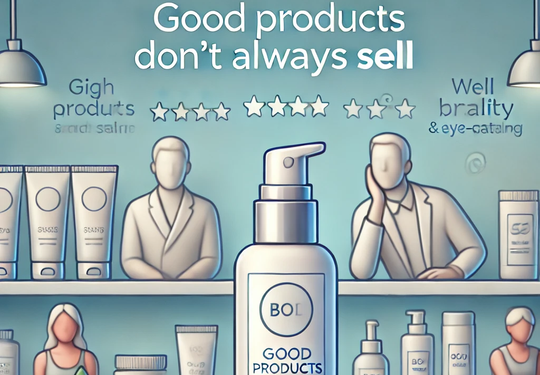Understanding the Difference Between Product Development and Formulation Development in Skincare
By:
bryan choong
On
16/11/2024Reading time:
0 min
Summary:
When starting a skincare line, many newcomers believe that a great formula is all it takes to make a successful product. While a high-quality formula is essential, it’s only one part of a much larger process: product development. In reality, product development goes beyond just formulation, encompassing a strategic approach that considers branding, packaging, pricing, unique selling points (USPs), sales channels, and marketing strategies. Each element plays a critical role in turning a formula into a complete, market-ready product.
Formulation Development: Crafting the Core of the Product
Formulation development is focused on creating the actual product that goes into the bottle, jar, or tube. This phase involves researching, testing, and fine-tuning ingredients to create a formulation that delivers the intended benefits, such as hydration, anti-aging, or brightening. The goal of formulation development is to ensure that the product is effective, safe, and stable.
Ingredients and Efficacy: Formulators choose ingredients based on the product’s intended purpose, such as using hyaluronic acid for hydration or retinoids for anti-aging. Testing and trials help ensure these ingredients work well together to provide the desired results.
Safety and Stability: Formulators also focus on the stability and safety of the product, testing it to withstand various temperatures and conditions. Safety testing, such as patch tests and compatibility checks, ensures that the product is safe for consumer use.
Formulation Challenges: Some formulas require extensive research, especially if the product needs specific textures, scents,or unique ingredients. For example, creating a waterless product for sustainability adds formulation complexity.

skincare product development
Product Development: Creating a Market-Ready Product
Product development encompasses the entire process of bringing a product from concept to market. It includes not only the formulation but also considerations around branding, packaging, pricing, and sales strategy. These elements are essential to building a product that resonates with consumers and stands out in a crowded market.
Branding and Positioning: Branding defines the personality and story of the product. A brand that resonates with consumers connects emotionally, building trust and loyalty. Is the product targeting eco-conscious consumers, luxury skincare users, or those with sensitive skin? Branding aligns the product’s message with the audience’s values and expectations. read more
Packaging Design and Functionality: Packaging isn’t just about aesthetics; it affects the consumer experience, perception of quality, and even product stability. For instance, a pump bottle may protect a product’s ingredients better than a jar. Packaging should align with the brand’s image—eco-friendly packaging for a sustainable brand or sleek, luxurious packaging for a high-end brand.
Price Point and Market Positioning: Price communicates the product’s market position. A luxury skincare line will have higher pricing, supported by premium ingredients, packaging, and branding. Mass-market products need accessible pricing to reach a wider audience, often focusing on value and volume sales rather than exclusivity.
Unique Selling Point (USP): The USP differentiates the product from competitors. A formula alone doesn’t provide a USP; it needs a clearly communicated benefit that appeals to consumer desires. For example, a product may focus on being “the only vegan collagen serum,” targeting customers who value cruelty-free alternatives.
Sales Channels: Sales strategy involves choosing where and how to sell the product, whether online, through social media, or in brick-and-mortar stores. Different sales channels can impact pricing, branding, and consumer reach.
Marketing Strategy: Finally, a product must be marketed to communicate its benefits to consumers. A strong marketing strategy will highlight the product’s USP, positioning, and value. Without effective marketing, even the best products can struggle to gain traction. read more

good products don't always sell
Why Formulation Alone Isn’t Enough
A well-crafted formula is essential, but without the support of product development, it’s unlikely to achieve long-term success. Here are some reasons why formulation alone isn’t enough:
Consumer Expectations: Today’s consumers are highly educated and have access to many skincare options. They expect more than just a product; they want a story, a brand they can trust, and a reason to choose it over competitors.
Market Saturation: The skincare market is saturated, with thousands of brands offering similar benefits. To stand out, a product needs clear differentiation, strong branding, and an appealing USP that attracts a target audience.
Emotional Connection: Consumers buy products that resonate with them emotionally. While a formula may meet their needs, it’s the brand story, packaging, and messaging that create a connection, encouraging repeat purchases and loyalty.
Brand Recognition: For a product to sell well, it must be easily recognizable and associated with quality, reliability, and desirability. This recognition comes from strategic proproduct development and consistent branding.
Turning a Formula into a Successful Product: Key Considerations
Invest in Branding: Define what makes your product unique and craft a brand identity that appeals to your target audience. Consider what will make consumers choose your product over others. read more
Understand Your Audience: Conduct market research to understand your audience’s values, preferences, and price sensitivities. Align your product’s positioning with their expectations.
Prioritize Packaging: Choose packaging that complements the product, protects the formula, and supports the brand’s image. Thoughtful packaging enhances customer perception and trust.
Define a Clear USP: Ensure that your product has a unique angle or benefit that competitors lack. This USP should be highlighted in both the product’s branding and marketing materials.
Develop a Marketing Strategy: Communicate your product’s story, benefits, and value proposition to the public. Invest in channels where your target audience is active, whether social media, e-commerce platforms, or retail stores. read more

importance of successful product
Conclusion: From Formula to Product
In the skincare industry, formulation is only the beginning. For a product to be successful, it needs to be developed as a cohesive, market-ready offering that connects with consumers. Branding, packaging, price, USP, sales strategy, and marketing are essential factors that transform a formula into a product consumers want to buy. While a good formula is foundational, it’s the combined effort of product development that makes a skincare line thrive in a competitive market.
In Summary: Understanding the difference between formulation and product development is crucial for skincare entrepreneurs. By focusing on both the science behind the formula and the strategy behind the product, brands can create skincare products that don’t just work—they also sell.
Subscribe form
This is where you want visitors to leave their email addresses so you can send them marketing info and targeted deals. To convince people to subscribe to your newsletter, try offering them something valuable that aligns with your business. This could be a special offer or early access to new products.